Fitify is a mobile workout app that says it can be your personal trainer right on your phone. It claims to help you lose weight, build strength, and stay active with more than 900 exercises. The app also creates fitness plans that match your goals, how much time you have, and what kind of experience you bring in. From quick daily workouts to full training programs and even recovery sessions like yoga or stretching, Fitify presents itself as an all-in-one fitness guide.
The big question is, do all these promises really live up to the hype? Or is it just another app trying to sound impressive? In this review, we will share our hands-on experience with Fitify. We tested Fitify and based on our experience, we’ll cover its features, design, performance, and pros and cons to see if it’s worth using.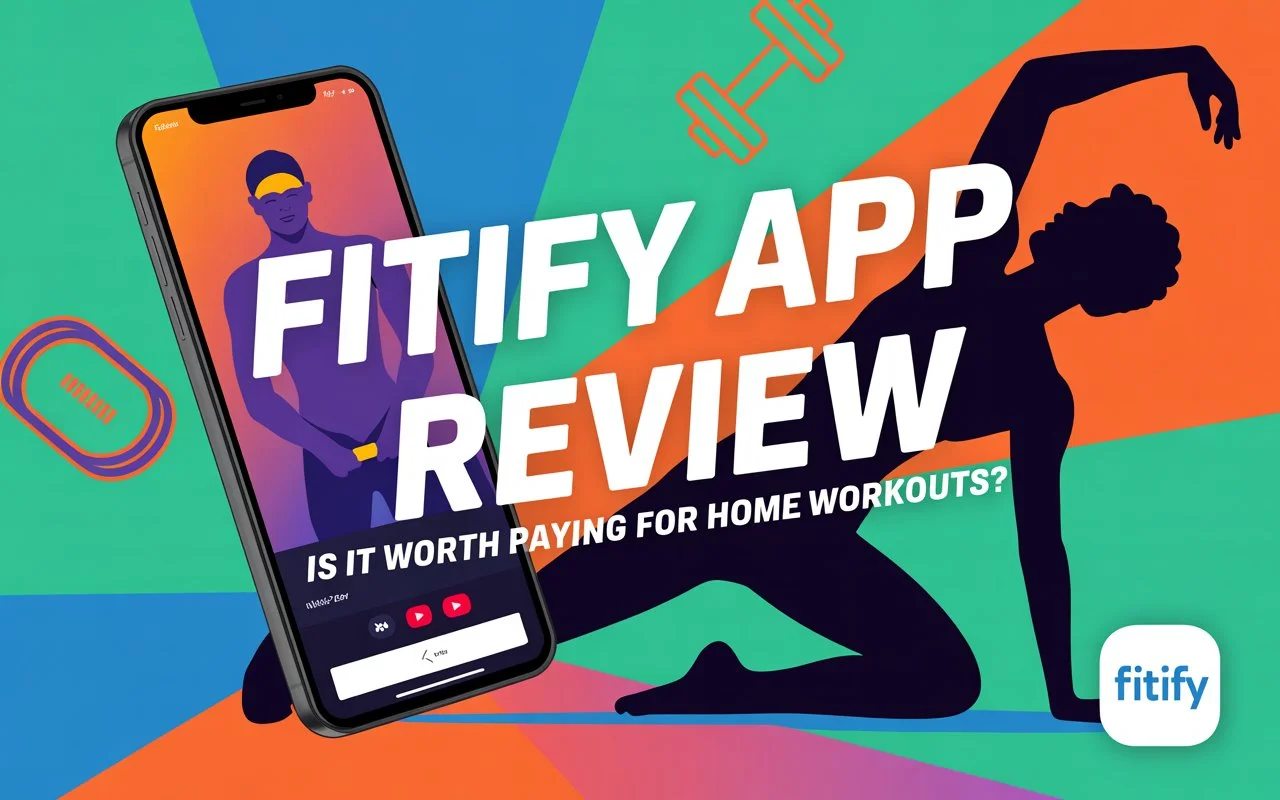
Fitify App Review: Everything You Need to Know Before Paying
What is the Fitify App, Exactly?
Fitify is a fitness app designed to help people stay active and train from home. It comes with more than 900 exercises, workout plans, and guided programs for strength, cardio, HIIT, yoga, stretching, and recovery. The app also uses AI to build workout plans based on your goals, fitness level, and equipment available, so you can train with just bodyweight or add dumbbells, kettlebells, or other gear if you have them.
Apart from workouts, Fitify also includes a food section with hundreds of recipes to match your diet preferences and a mind section that provides guided programs for sleep, focus, stress relief, and relaxation.
Key Features of the Fitify App
- Personalized fitness plans made for your goals and experience level
- Over 900 exercises, including bodyweight and equipment-based workouts
- Quick daily workouts that can be finished in around 15 minutes
- 20+ pre-made workout routines for strength, cardio, and specific body parts
- 15+ recovery sessions such as stretching, yoga, and foam rolling
- Option to build your own custom workout from a large exercise database
- Works offline, so you can train without an internet connection
- Clear video demonstrations with a voice coach
- Syncs with Apple Health to track activity and calories.
Pros and Cons of the Fitify App
Pros
- Huge variety of exercises that keep workouts fresh and not boring
- Flexible fitness plans that adjust to your fitness level and time schedule
- No need for gym equipment, but you can still use tools if you have them
- Short workouts make it easy to stay consistent even on busy days
- Simple design with clear videos that make exercises easy to follow
- Ability to create your own workout routine for full control
- Works offline, which is useful when the internet is not available.
Cons
- Very limited free version, with most workouts and plans locked behind a paywall
- No free trial, making it hard to test the app before paying for a subscription
- Too many pop-ups pushing users to upgrade to Pro, even before completing a single workout
- AI-generated workout plans feel basic and not very effective, often just mixing random exercises
- Expensive subscription compared to what you actually get, especially for beginners
- Lack of language options and random app crashes.
Fitify App Price
Fitify comes with different subscription plans, but the prices are not the same everywhere. In some places, the monthly plan shows up as around 6$ to 10$, while in others it can go up to 15$. The yearly plan is usually around 55$ to 70$, depending on your country and the store you are buying from. We took the monthly plan by paying 9.99$ for Fitify Pro to test the app.
When it comes to free trials, things are not that clear. Most of the time, there is no trial option at all, and during our testing, we did not find one either. The app does mention a 30-day money-back guarantee, but it is not as simple as it sounds. It is not a straight no questions asked refund. You have to go through a long process, and in many cases, the refund is handled by Google or Apple, which makes it even harder to actually claim your money back.
User Interface and Design
The first thing you notice about Fitify is how clean and premium the app looks. The main screen feels inviting, and the workout pages are designed in a way that actually makes you want to press play and move, almost like you are playing a game. We really liked how easy it is to set up workouts with dumbbells, kettlebells, or even just bodyweight. They also added a nice touch where you can pick the kind of Spotify playlist you want, which makes the workout feel a bit more personal.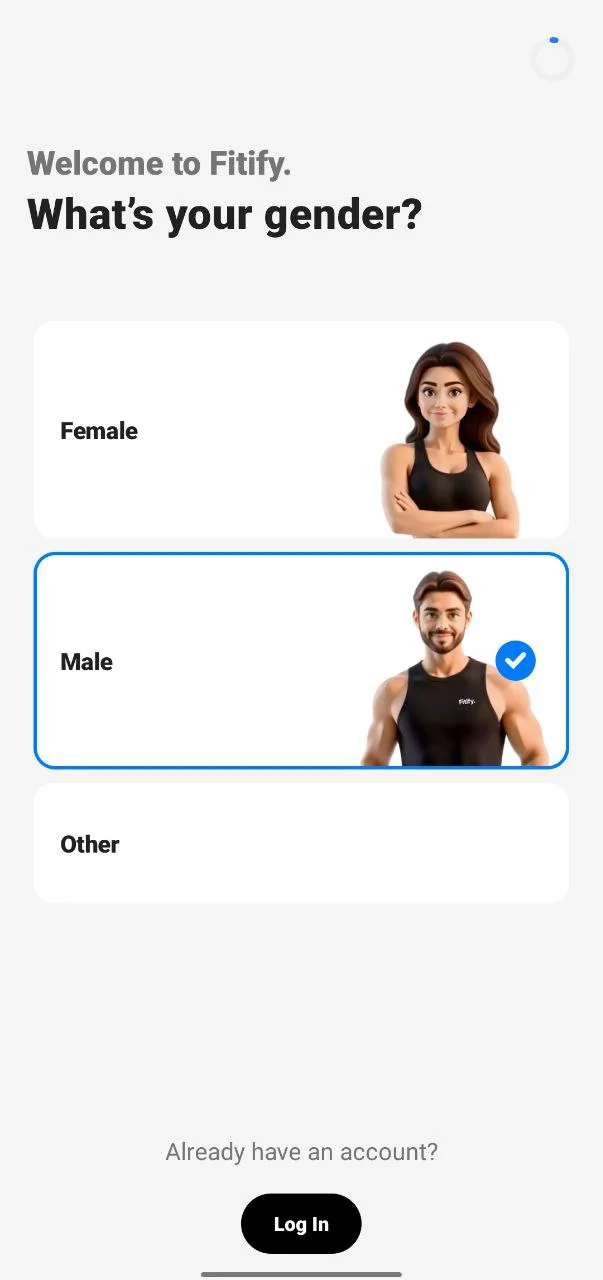
That being said, the signup part feels a little too long. As soon as you install the app starts throwing in a bunch of questions about your fitness goals, habits, and preferences. This is fine for creating a plan, but after a while, it feels like too much. Even when the app shows you your personal plan, it asks for a few more answers before letting you continue. 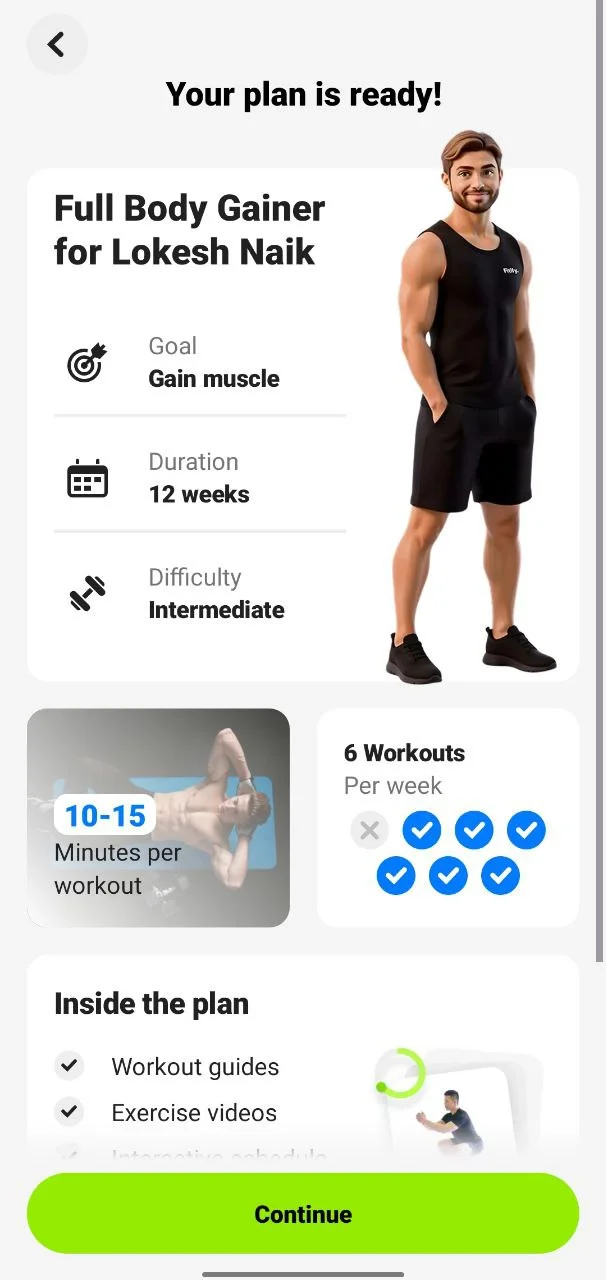
After that, you need to sign in using Google, Facebook, Apple, or email, and then the subscription screen shows up. Prices change depending on the country, but you can close this screen by tapping the small X at the top.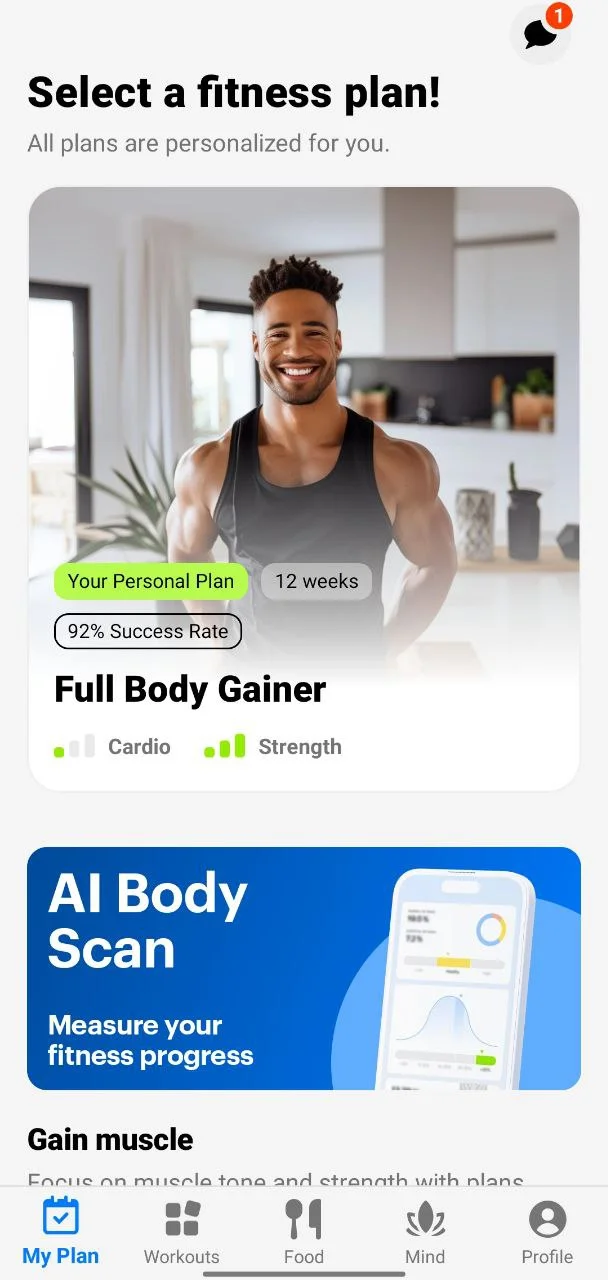
Once you land on the home screen, everything is divided into five clear sections: Plan, Workout, Food, Mind, and Profile. The workout section has categories like strength, HIIT, cardio, yoga, stretching, warmup, and recovery. Each workout comes with an animation that shows exactly how to do it, along with a few hints.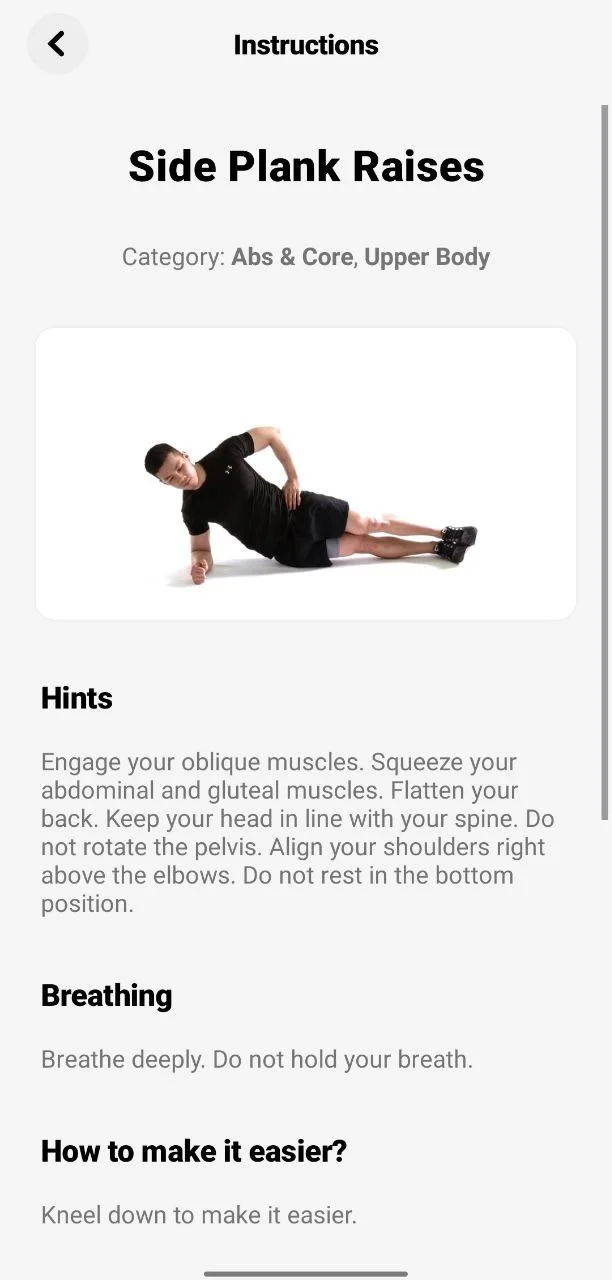
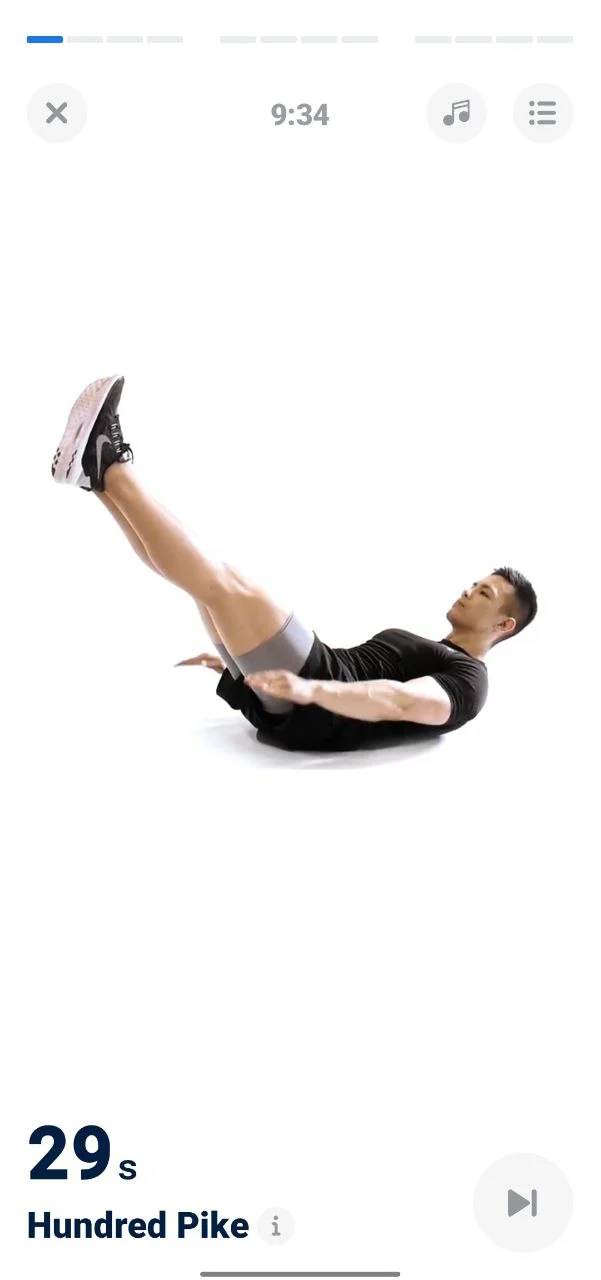
One of the more unique tools is the “AI body scanner.” It asks you to take two photos with your phone and then builds a 3D body model with more than 80 measurements. Based on this, it shows details like BMI, fat percentage, lean body mass, and BMR. While it may not be as precise as the app promotes, it still gives a rough idea of your progress and helps in building a personal plan. The app does take your consent before moving ahead, since the photos are uploaded to its server to calculate the insights. For many, this might feel a bit privacy-invasive, so it is something you should think about before using the feature.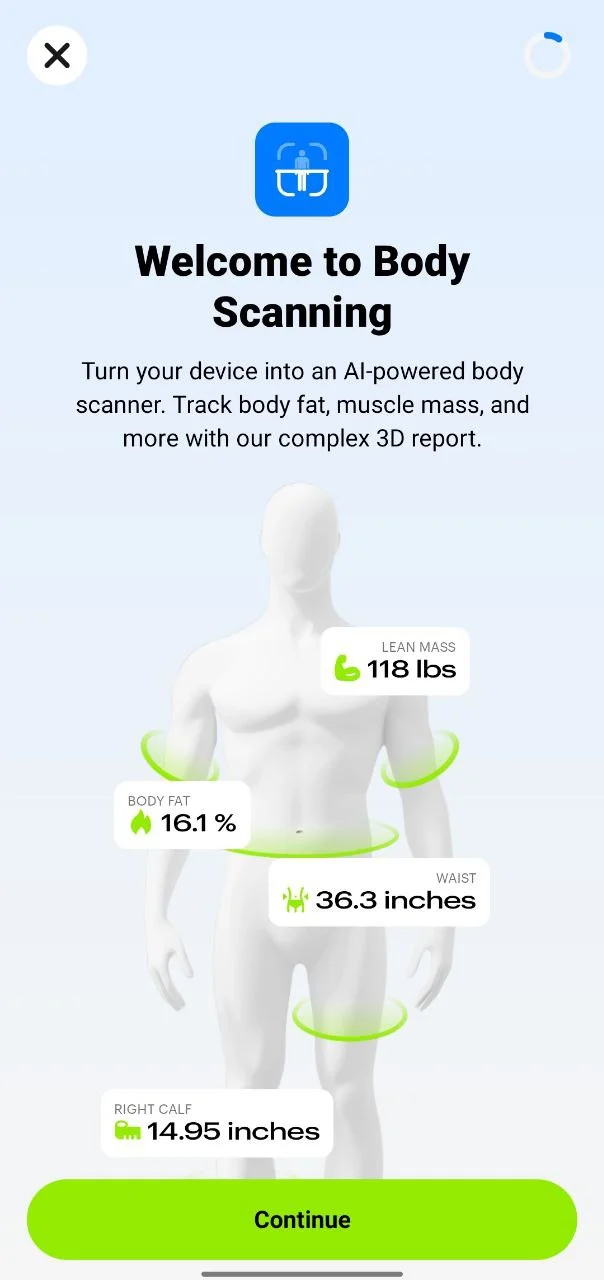
The Food section is a nice extra. It has more than 900 recipes, and you can sort them by meals like breakfast, lunch, dinner, or snacks. You can also pick based on preferences such as low calorie or sugar free. 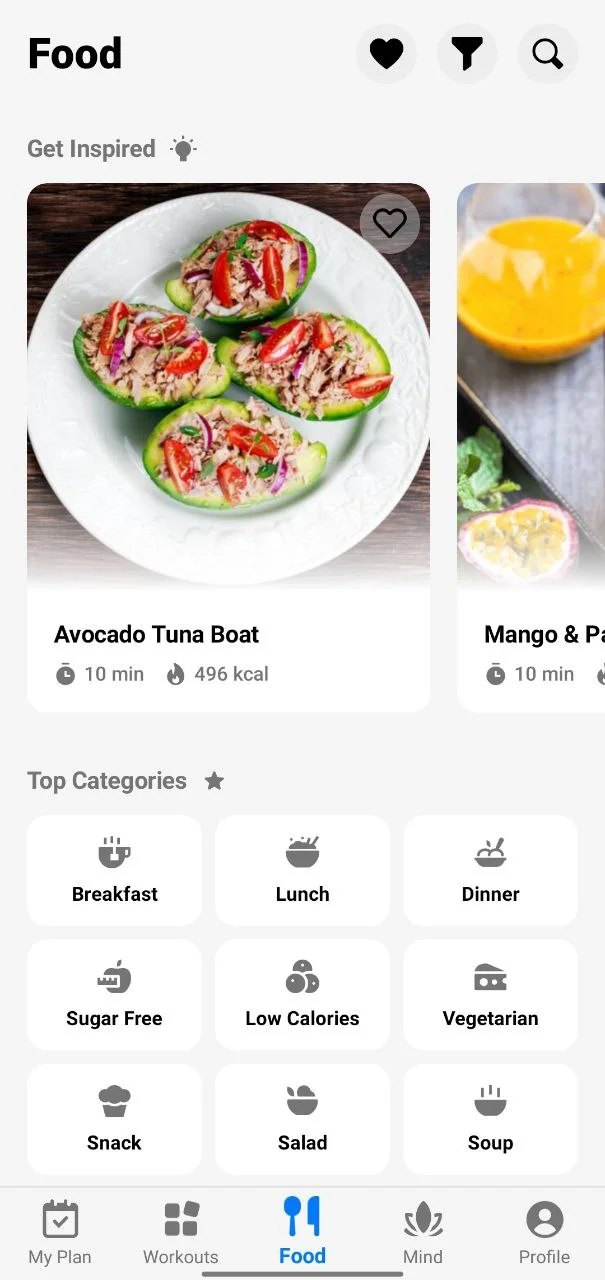
The Mind section focuses on guided programs that help with stress, focus, relaxation, positivity, energy, and sleep. Each program shows you a quick description, so you know what you’re about to try.
Finally, the Profile section is where you see your progress, edit details, or explore the full exercise list. You can also download extra packs here. Overall, the app design feels neat, premium, and easy to use. It never looks messy, and everything is right where you expect it to be. 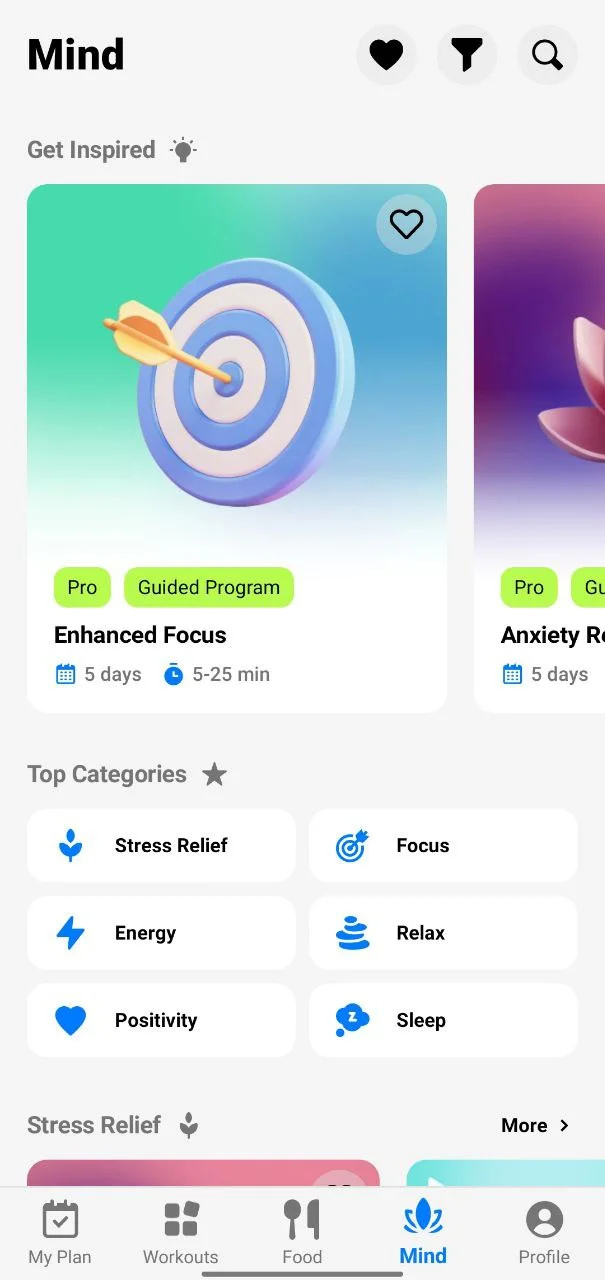
Performance
When we tried the Fitify app, it felt really easy to use from the very first workout. The exercises opened quickly, animation played without any delay, and moving around the app was simple and clear. We didn’t run into crashes or sudden stops, which made the whole workout experience feel steady and reliable.
We also liked how the app responded quickly when switching between workout plans and other sections. Everything flowed nicely and gave the impression that the app has been built with care. Overall, it gave us the confidence to focus fully on the workouts instead of worrying about technical issues.
Final Verdict of Our Fitify App Review
After spending time testing Fitify, our team came out with mixed feelings. The app looks clean, the design is simple to use, and it really feels like something that can help people who want to train at home. The workout videos load fast, the structure is easy to follow, and extra features like food recipes and the mind section add a nice touch. We also liked that you can choose training areas to focus on, AI-based workout plans, create your own custom workout plans, and even pick quick sessions that last anywhere from 10 to 30 minutes.
Another plus is that most of the content works without internet, so you don’t always need Wi Fi to exercise. The app feels safe to use and is handy for home workouts, though the AI body scanner uploads photos to its server, which some may find a little privacy sensitive. It can definitely be a handy tool for someone who wants to exercise without going to the gym.
That being said, don’t expect much if you’re planning to use the free version. Almost everything is locked behind payment, and the app doesn’t even offer a proper trial period to get a real feel before buying. We took the monthly plan during our test, and while the workouts are fine, the AI plans mostly just mix up exercises instead of creating something truly personal. On top of that, there’s no lifetime option, only monthly or yearly subscriptions, which makes the value a bit questionable in the long run.
So, would we recommend Fitify? Only if you are ready to pay and want a well-designed app for home workouts. If you’re looking for free content, this won’t be the right choice.
OTHER WORKOUT AND FITNESS APPS REVIEWS:
- Muscle Monster App Review: What We Found After Testing It
- Mad Muscles Review: Everything You Need to Know
- Muscle Booster App Review: How Does it Work & Is it Worth Paying For?
- Freeletics App Review: What We Found in Our Testing
We hope this Fitify app review helps you decide if this app is the right fit for your fitness journey. Remember, everything we shared here is based on our own testing experience at the time of writing. The issues or downsides we noticed might already be fixed or improved in future updates.








